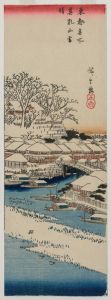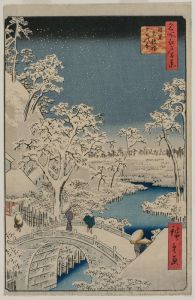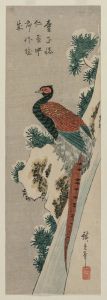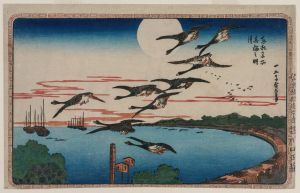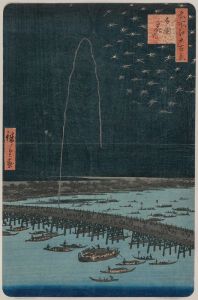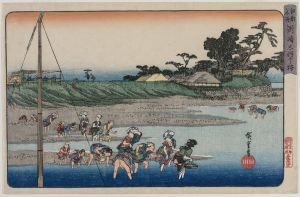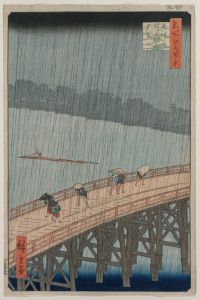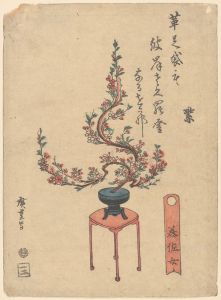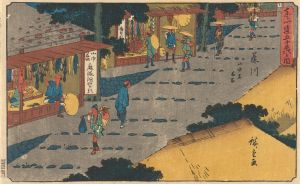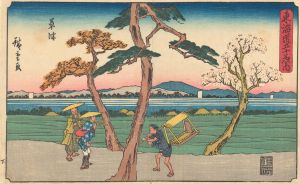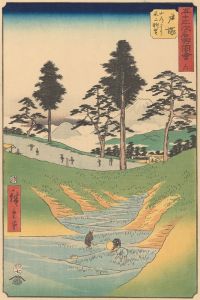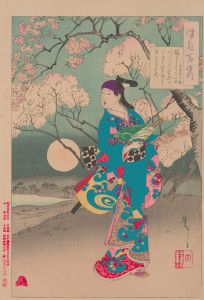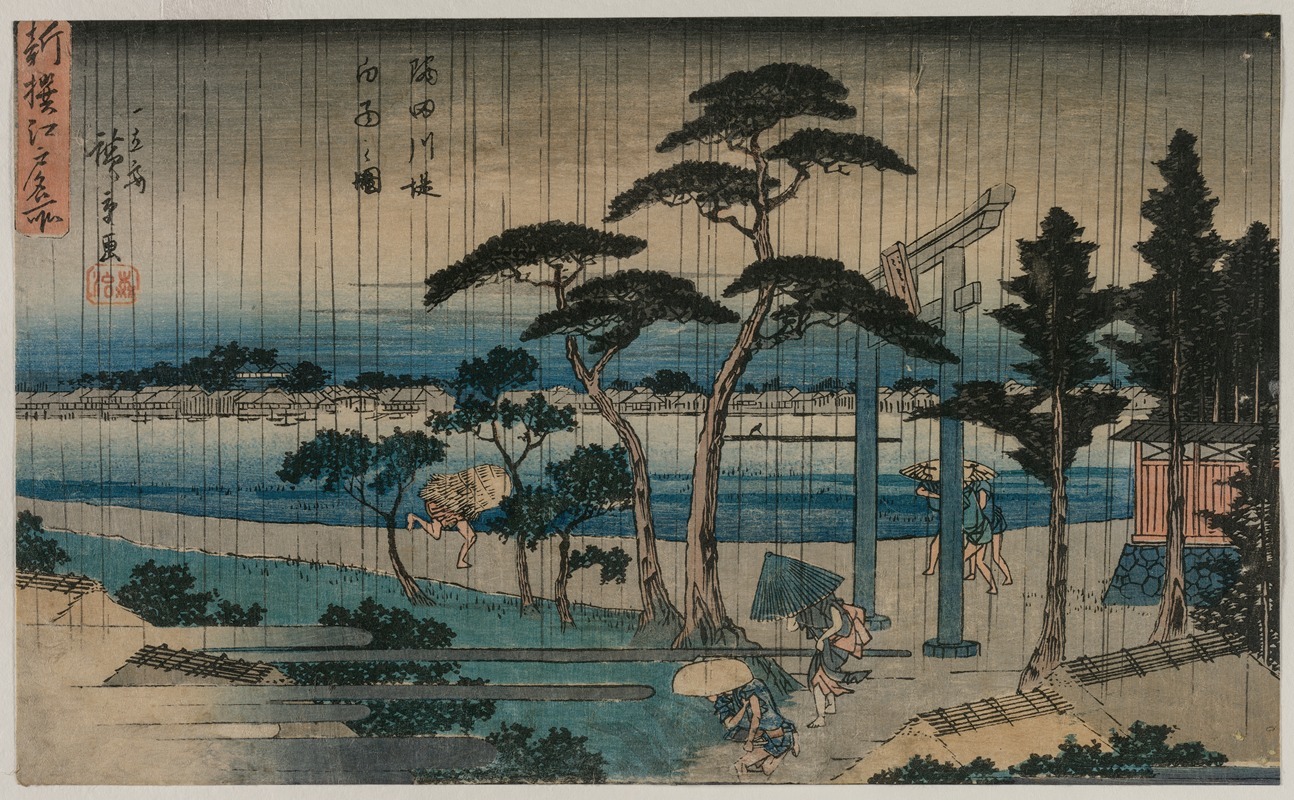
Picture of Light Rain on the Embankment of the Sumida River, from the series A New Selection of Famous Places in Edo
A hand-painted replica of Andō Hiroshige’s masterpiece Picture of Light Rain on the Embankment of the Sumida River, from the series A New Selection of Famous Places in Edo, meticulously crafted by professional artists to capture the true essence of the original. Each piece is created with museum-quality canvas and rare mineral pigments, carefully painted by experienced artists with delicate brushstrokes and rich, layered colors to perfectly recreate the texture of the original artwork. Unlike machine-printed reproductions, this hand-painted version brings the painting to life, infused with the artist’s emotions and skill in every stroke. Whether for personal collection or home decoration, it instantly elevates the artistic atmosphere of any space.
Andō Hiroshige, a renowned Japanese ukiyo-e artist of the Edo period, is celebrated for his exquisite landscape prints and depictions of famous places. One of his notable works is "Picture of Light Rain on the Embankment of the Sumida River," which is part of the series "A New Selection of Famous Places in Edo" (Shinsen Edo Meisho). This series exemplifies Hiroshige's mastery in capturing the transient beauty of nature and urban life in Edo, now modern-day Tokyo.
The artwork "Light Rain on the Embankment of the Sumida River" showcases Hiroshige's skill in portraying atmospheric conditions and the serene beauty of everyday scenes. The Sumida River, a significant waterway in Edo, was a popular subject in Hiroshige's work, reflecting its importance in the daily life and culture of the city. The river was not only a vital transportation route but also a place for leisure and recreation, making it a fitting subject for Hiroshige's exploration of Edo's landscapes.
In this particular print, Hiroshige captures the gentle ambiance of a light rain shower over the river embankment. The use of soft colors and delicate lines conveys the subtlety of the rain and the tranquility it brings to the scene. Hiroshige's technique often involved the use of bokashi, a method of creating gradations of color, which is evident in the way the rain and sky are depicted. This technique adds depth and a sense of movement to the print, enhancing the viewer's experience of the scene.
Hiroshige's work is characterized by its attention to detail and the ability to evoke a sense of place and time. In "Light Rain on the Embankment of the Sumida River," he captures the essence of Edo's natural beauty and the harmonious relationship between the city's inhabitants and their environment. The print is not just a depiction of a specific location but also an expression of the mood and atmosphere of the moment, inviting viewers to appreciate the ephemeral beauty of the world around them.
The series "A New Selection of Famous Places in Edo" was created during a time when Hiroshige was at the height of his artistic career. His works from this period are noted for their refined composition and innovative use of perspective, which influenced many artists both in Japan and abroad. Hiroshige's landscapes, including this depiction of the Sumida River, played a significant role in the development of the ukiyo-e genre and left a lasting impact on the art world.
Hiroshige's prints were widely appreciated not only in Japan but also in the West, where they influenced the Impressionist movement. Artists such as Vincent van Gogh and Claude Monet admired Hiroshige's ability to capture the essence of nature and incorporate it into their own works. The simplicity and elegance of Hiroshige's compositions continue to inspire artists and art enthusiasts around the world.
In summary, "Picture of Light Rain on the Embankment of the Sumida River" is a testament to Andō Hiroshige's artistic genius and his ability to convey the beauty of Edo's landscapes. Through his masterful use of color, composition, and technique, Hiroshige invites viewers to experience the serene and fleeting moments of nature, making his work timeless and universally appreciated.





